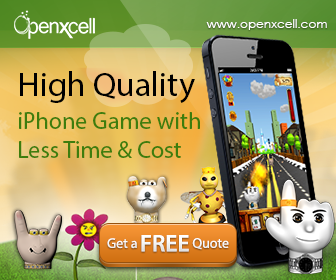Having
developed a proficient app that intends to target niche audience,
your utmost efforts should be in the direction of advertising your
app to build a wider audience and thereby create greater buzz. While,
few of the affluent app marketing tactics such as app store
optimization and app landing page creation leverages the
profitability of the marketing efforts to a certain height, in-app
advertising is another major and effective marketing method
of promoting your app via posting interesting ads within other apps.
In-app
advertising:
By
opting In-app advertising, developers can simply avail an enormous
platform to reach out to their app’s niche audience just where they
tend to spend
their maximum amount of time,
i.e on smartphones and tablets. To procure highest profitable
results, the goal should be to deliver ads that are as relevant and
interesting as possible in order to witness maximum number of
audience respond to the ad.
Developers
can choose from a variety of In-app advertising solutions discussed
below. These various types of in app ads are offered in different
pricing models by some of the best mobile ad networks in the market,
that would be discussed as well.
Interstitial
ads:
Interstitial
literally means in-between. Interstitial ads can be placed between
the transition points in the app. It could be during the launch,
during the completion of levels if its a gaming app or as video
pre-roll. They are comparatively more intricate and tend to be
full-screen ads. Interstitial ads are considered more effective in
terms of generating clicks compared to the banner ads, because they
tend to easily grab the user’s attention. However, the frequency of
these ads is a matter of question. As these ads are likely to take
the users a bit away from their flow of activity, the users shouldn’t
feel that they are being distracted too frequently or else it could
end up affecting negatively rather.
Banner
ads:
Mobile
Banner ads are one of the most common ad formats offered by the
mobile ad networks. These are the ads that show up either at the top
or bottom of the app screen. Banner ads are capable of communicating
in no time, hence it is essential to make sure that the ads are
effective enough to convey the message. These ads can be also
displayed while operating the app activities.
Rich
media ads:
Rich
Media mobile ads tend to provide the best user experience to the
users through multimedia experiences that is more than just
displaying text, animations, pictures or videos. These Rich Media ads
convey information much more effectively compared to the conventional
banner ads. Moreover, the additional multimedia elements makes the
ads even more attractive and catchy. Hence, it results in high
conversions, click rates and engagement.
Reward/
Incentivised Ads:
Reward
based ads aims to present the users with coupons or other offers for
downloading the apps. You can bring in even more users just by
offering them relevant coupons or rewards that can be redeemed by
them immediately.
App
wall:
App
walls are basically single in-app interstitial that display multiple
apps at the same time. Here, your app has to compete with many other
similar or different apps as the audience will have many choices
before selecting one. Hence it is essential that your app looks
convincing enough to trigger more clicks as it is all that would
matter to increase your app’s download numbers.
Below
are some of the common pricing models of these In-app advertising
ads.These Pricing models glossary will help you understand the basic
pricing terms.
CPI
(Cost Per Install)
CPI
that is Cost Per Install provides a great benefit to the developers
where in they have to pay a certain amount only when the app is
installed by a user.
CPM
(Cost Per Mile)
CPM
stands for Cost Per Thousand Impressions where the developers are
suppose to pay a certain amount for every one thousand times their ad
is viewed.
CPC
(Cost Per Click)
CPC
is a popular model that has already been exploited heavily by the web
advertisers. Cost Per Click model is similar to CPI model. A set
price is to be paid every time someone clicks on the ad.
To
conclude, we would like to give you 3 useful tips
on in-app advertising:
- Send ads with highest relevancy to your target audience
- Provide clear call to action within the ad
- Test what works best for you
















